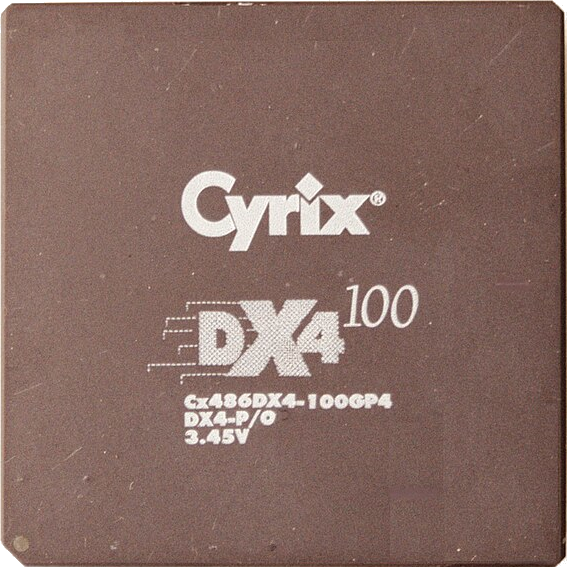I’ve been around selfhosting most of my life and have seen a variety of different setups and reasons for selfhosting. For myself, I don’t really self host as mant services for myself as I do infrastructure. I like to build out the things that are usually invisible to people. I host some stuff that’s relatively visible, but most of my time is spent building an over engineered backbone for all the services I could theoretically host. For instance, full domain authentication and oversight with kerberized network storage, and both internal and public DNS.
The actual services I host? Mail and vaultwarden, with a few (i.e. < 3) more to come.
I absolutely do not need the level of infrastructure I need, but I honestly prefer that to the majority of possible things I could host. That’s the fun stuff to me; the meat and potatoes. But I know some people do focus more on the actual useful services they can host, or on achieving specific things with their self hosting. What types of things do you host and why?
I’ve seen a few mentions of PiHole and AdguardHome, I started on PiHole, then moved to AdguardHome for adblocking. Then I heard about and have been using TechnitiumDNS server which is sort of overkill for our needs, but with the right ad-lists, it is fantastic at blocking advertisements on my home network. Super fast install too, even on a Raspberry Pi 2 :) I run that along with Proxmox-VE (Protected behind OIDC Login) and several other containers on my cranky old Dell Desktop server.
Mostly Vaultwarden, and a few other services for home private use such as PairDrop for inter system sharing and a self destructing file sharing server for when we need to send documents to our Attorney’s (rarely but sometimes we need to) office via Pingvin.
I also run:
- Home Assistant
- Transmission Dockerized so I can help contribute to the Linux community and share the ISO’s.
- For some of my externalized sites, I run Authentik It acts sort of like a Reverse Proxy if you configure it to do so. I love that I can simply identify myself with my WebAuthn device skipping any passwords. :)
With Authentik setup, I can login to things like my Fresh Tomato Router TechnitiumDNS (Both use HTTP Auth headers) and Memos which uses OIDC/SSO. It’s meant to replace our Google Keep notes.
- Tailscale is installed and I connect to it from my phone when away from home to always stay on my network. Sometimes, hotspots block it so I generally avoid those as much as possible.
- Wallos to help keep track of our re-occuring subscriptions.
- Grafana and Promethus - both are staged and ready for configuration and one of those I will get around to eventually.
- InfluxDB - I plan on moving Home Assistsant logging soon to that which should tie nicely into Grafana later.
- Ben Phelps’ Homepage - it’s my main server dashboard my wife and I use to access our server. Quite simply one of the best dashboards IMHO.
- Wyze Cam Bridge - One of the better services in which you can log into your Wyze cams and convert their streams to RTSP, RTMP or HLS streams easily. I have that feed to my Home Assistant Security Dashboard.
- Baserow It’s a good Airtable alternative and I use it to keep track of my Static IP assignments, Sleep tracker (I suffer from insomnia), and other data points. It’s pretty amazing. I even created a pain logging for for my wife so she just accesses it and answers basic questions about her pain levels and it pushes it to the database for later retrieval.
- Joplin Server - Sorry, I don’t have the link, but it’s installed via compose. I use Joplin Notes on my phone and computer for keeping my code snippets. I’ve tried Obsidian and it didn’t really meet my needs and Also Anytype, but that’s not self-hosted. Joplin server is for me and that’s become handy a time or two when on the road.
- Bookstack - my grand plan for that is to build a Wiki for my family to use in the event something should happen to me, they can know how to manage the server with nice screenshots and instructional steps. I have that protected behind Authentik’s OIDC logins.
- IT-Tools - hands down one of the coolest self hosted tool sets you can use.
- Webcheck - All-in-one OSINT tool for analyzing any website https://web-check.xyz/ is their demo site. :)
- Stirling PDF - Kind of like a Swiss-army knife for PDF’s. :)
- Dozzle - For those times with you really need to see what your Docker logs and too lazy do run a
docker logs -followcommand.
I still use Portainer-CE and am happy there, I may try Dockage or the others, but it’s fine for what I need it for (It’s also protected by OIDC)
I’m sure I may have missed a few, but this post has gone on long enough. :)
IT-Tools - hands down one of the coolest self hosted tool sets you can use.
Looks similar to Cyberchef. Any reason to use that one over Cyberchef?
A bunch of people recommend dozzle in this thread… I’ve been using Dockge. I wonder how they compare. I’ll have to check that out later.
All of the services that I host are for private use:
- Nextcloud
- FreshRSS
- Immich
- Jellyfin
- RSSBridge
And they are all behind Caddy, which reverse proxies and handles HTTPS. I’m not sure if it really counts as self-hosting, but I also use my server as a host for my backups with Borg. I also use it as a sort of central syncing point for Syncthing.
I did have a Pi-Hole at one point, but I kept running into issues with it — I may look into it again in the future.
At some point I’d like to try implementing some ideas that I’ve had for Homeassistant (a camera server with Frigate and some other automation things). Once federation has been implemented I would like to host a Forgejo instance. I may also host a Simplex relay server, depending on how the app progresses. I’ve been considering hosting a Matrix instance, but I’m not sure yet.
(Preface: almost all of this is handled in a single Nix config, and no docker in use at all)
At home, in a two-hosts Proxmox cluster:
- blocky for adblocking
- a full *arr stack with torrents and nzbs for uuuuuuhhh Linux ISOs
- Jellyfin so friends and family can watch, I mean use the Linux ISOs
- Paperless (HIGHLY recommend)
- Wastebin (Pastebin alternative)
- Sterling-PDF (also really recommend, allowed me to get rid of Acrobat Reader for filling out and signing PDFs, plus a bunch more)
- Homeassistant
- Linux and Windows clients available for whenever you might need them (not often, but can come in handy)
- Borg client, backing up parts of my NAS to a cloud storage box
- OPNSense backup for the hardware firewall
- Forgejo
On a bare metal machine at a reputable cloud provider:
- my personal Email, Calendar, Contacts (super easy with Nix)
- another blocky instance
- another borg client
- Rustdesk server (OSS Teamviewer)
- wireguard that’s just used by my TV so crunchyroll thinks it’s in (other country), Lmao
Wishlist:
- Vaultwarden
- Immich, once added to nixpkgs
- PeerTube
- Pixelfed
Any chance you could share any of your Nix config? I’m curious how it’s being used with Proxmox (I’m using ansible and terraform right now).
I thought about adding a link, but am a bit hesitant to de-anonymize myself on here 😅
But it’s basically this:
- Proxmox is not Nix configured. There’s a project for that, but IMO t’ll take a couple of years to be ready for production.
- I’ve created a custom nix module that essentially just sets my default values for stuff like bios type, boot order,… And allows to set CPU cores, RAM, IP,…
- all this does though is just setting the corresponding values from the nixos-generators proxmox output
- additionally, all the usual stuff is handled (user, known ssh keys, base config of the system)
- for each VM, I only have a single file containing the VM settings (ID, RAM, cpu, ip,…) and the service config for whatever the VM is for
- then lastly I have a custom script/shell that essentially just allows to do "nixvm-new " which generates the image, moves it to the nas, and calls on proxmox to import the image, plus some cleanup
TBH this sounds way more complicated than it is / feels to use 😄
The main things for me are: Wireguard, NextCloud and an NFS/SMB share and a torrent client (Deluge)
I self host jellyfin, nextcloud, owncast, tandoor, komga, photoprism and searxng. I use nginx proxy manager for a reverse proxy and SSL cert automation. Works great for me but I would like to get into traefik sometime.
I self host for privacy reasons, also it’s fun, it’s a learning opportunity and sometimes self-hosted services are functionally better than the other options out there.
Public services: my social network(hubzilla), Email(mailcow), Matrix chat, Peertube.
Private: my media (jellyfin, audiobookshelf, calibre, homeassistant.
I enjoy the freedom that comes with this and its like having your own home on the internet. I have a very modest setup but its enough to host my friends and family so nothing fancy like k8s. Just a refurbished optiplex running docker :)
(How/) Do you access your private stuff from outside your home?
Everything
…except email 😑
Jellyfin Plex (I wanted to get rid of it but I found my son’s TV has no Jellyfin client available so I have to keep Plex up for him) Nginx Caddy Ddclient to Cloudflare for my home dynamic IP Syncthing (such an underrated app) Wireguard HomeAssistant Some other stuff that isn’t all that interesting
Acronyms, initialisms, abbreviations, contractions, and other phrases which expand to something larger, that I’ve seen in this thread:
Fewer Letters More Letters DHCP Dynamic Host Configuration Protocol, automates assignment of IPs when connecting to a network DNS Domain Name Service/System Git Popular version control system, primarily for code HTTP Hypertext Transfer Protocol, the Web HTTPS HTTP over SSL IMAP Internet Message Access Protocol for email IP Internet Protocol LAMP Linux-Apache-MySQL-PHP stack for webhosting NAS Network-Attached Storage NFS Network File System, a Unix-based file-sharing protocol known for performance and efficiency NVR Network Video Recorder (generally for CCTV) PiHole Network-wide ad-blocker (DNS sinkhole) Plex Brand of media server package SMB Server Message Block protocol for file and printer sharing; Windows-native SSD Solid State Drive mass storage SSL Secure Sockets Layer, for transparent encryption SSO Single Sign-On Unifi Ubiquiti WiFi hardware brand VPN Virtual Private Network VPS Virtual Private Server (opposed to shared hosting) XMPP Extensible Messaging and Presence Protocol (‘Jabber’) for open instant messaging k8s Kubernetes container management package nginx Popular HTTP server
[Thread #871 for this sub, first seen 15th Jul 2024, 16:35] [FAQ] [Full list] [Contact] [Source code]
For media, I host the some of the arr apps, qbittorrent, Jellyfin, gpodder2go, and navidrome. For personal photos, I host PhotoPrism. I host a file sharing service fileshelter, and a link shortening service chhoto-url. I host Wiki.js for mostly recipes, and some notes. I’ve recently started hosting Forgejo for my git repos. I also host SageMath for computation, it’s especially useful when I only have my phone with me and need to use it. I use caddy as a reverse proxy and serve these through a VPS using a Wireguard tunnel.
Masochism, paranoia.
-
Bittersweet chocolate chips: We melt 60% cacao bittersweet chocolate baking chips into the buttery base.
-
Butter: The unsalted butter in this recipe operates like an emulsifier—stabilizing the fat and the liquids—resulting in a tender cookie.
-
Eggs: We rely on eggs to help leaven and form the shape of these chocolate brownie cookies.
-
Sugar: The sugar imparts sweet notes into these brownie cookies while caramelizing their edges.
-
Vanilla extract: We add a splash of vanilla extract to help enhance the sweetness of the chocolate in these brownie cookies.
-
Petunias: Pretty petunias are popular because of their exceptionally long flowering period. As with most annuals, they get leggy by midsummer, so you’ll want to prune the shoots back by half. See more tips on planting and caring for petunias to keep them blooming.
-
PiHole, Plex and the related “*arr” apps. I also self-host my home automation platform (Home Assistant).
Me too, except it’s Adguard for me.
Came in handy yesterday actually. I have a friend who works for a University which was recycling some Chromebooks.
He managed to grab 3 for me, one for myself and one for my kids.
Problem is that one of my kids is being supervised through Google Family Link which means for some reason the Play Store won’t work.
So he is now unsupervised in Family Link just to get the Chromebook working.
So I’ve just given both my kids static IPs and pointed their Chromebooks at Adguard, then turned on Safe Search and adult content blocking.
Now I’m fairly confident they’re protected from a lot of the bad shit on the internet.
I’ve configured my kids devices to use NextDNS, that way they are getting filtering no matter what network they use.
AdGuard does what I need internally, it’s just external is the issue. VPN’s are not a solution, my kids are old enough to know they can just disable it to work around it. They don’t know about the Private DNS option that I have configured on their devices… Yet













